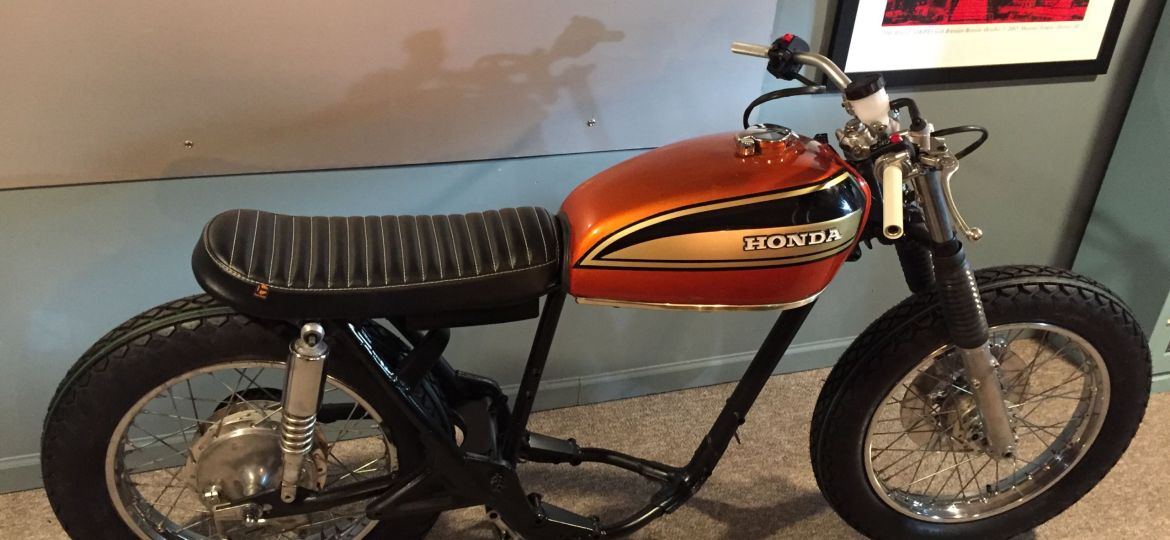
I’ve built bikes and other rides for lots of people — from blue-collar folks to leaders of tech start-ups, to special ed teachers, politicians, rock stars and the rest.
I don’t advertise anywhere special. I don’t drag bikes to Barret Jackson or list them on Bring a Trailer, or in Hemmings. Suiters find my stuff among the used microwaves, clean topsoil, rock posters and other curiosities listed for sale on Facebook Marketplace. It’s a fun way to meet people who like the things you like.
While I’ve written a thousand sales pitches in my career for a thousand products that people may or may not want, my bikes sell effortlessly — just a couple pictures, sometimes a visit to hear them run, and a fair price. Even better, selling them doesn’t require any of the negotiating and closing expertise I’ve halfheartedly absorbed writing about that stuff over the years. There’s nothing more gratifying when your work speaks for itself, and people appreciate it enough to dig deep to own a piece of it.
There are a lot of similarities between what I do from a desk and what I do with a wrench. Maybe that’s why I find so much enjoyment in both.
1. Close Examination
Bike Building — Completely disassemble the bike. Take lots of photographs as I bag and tag everything. Arrange the greasy bags and large components into some sort of order on the floor
Business Strategy — I prefer working on worn out businesses than ones in mint condition (if there is such a thing). I like carefully disassembling them and taking a good look all of the amazing parts — the people, the mission, the products and approaches …
2. Imagine Better
Bike Building — I look at the pile for a couple of days. Listen to the parts. Find out what they’re saying — what they dream of becoming.
Business Strategy — Ask … “What’s the very best thing we can make with the parts?” I look at strategy like the Chopped Kitchen. Every team and company has good and bad in their basket.
3. Mock and Test the Concept
Bike Building — Pick out the iconic parts from the pile — three or four things — and see what they look like together. Here’s where you decide if a bike is going to be “remarkable” — something worth taking about, taking pictures of. The power unleashed when you get it right will fuel the whole project.
Business Strategy — Same. I model out every business idea. Just like understanding how an engine works, if you understand business physics, you can get a good sense if your business model has a chance. If the mock-up doesn’t energize the stakeholders, it isn’t right. Then I like to “math ‘em up” on the idea dyno to find their breaking points.
4. Modernize the Systems
Bike Building — Not everything in a bag, goes back on a bike. The fuel and electrical systems and anything made of rubber all get immediate upgrades. The systems need to serve the new vision for the bike, not Soichiro Honda’s original intention. But these are not what makes the bike special.
Business Strategy — Your systems will need upgrading. Sure, that could mean your IT system, but most likely it will be your people, processes and culture. These will need to work seamlessly not to distract from the success of your company.y of the future
There are a lot more similarities, but you’re probably tired of reading, and it’s time for me to ride my day-job desk some more.
So … I’ll leave you with two things:
- Be Encouraged. Your company has great parts that can become the centerpiece of something new and exciting — without sacrificing the soul of business. That’s one of your great parts
- Go Make History. I believe the inventors of the future will come from unexpected places. It won’t be as easy as hiring someone with the right degree or an aspirational brand name on their resume. You’ll always be able to find people to tell you history, it takes a weird kid to make history.